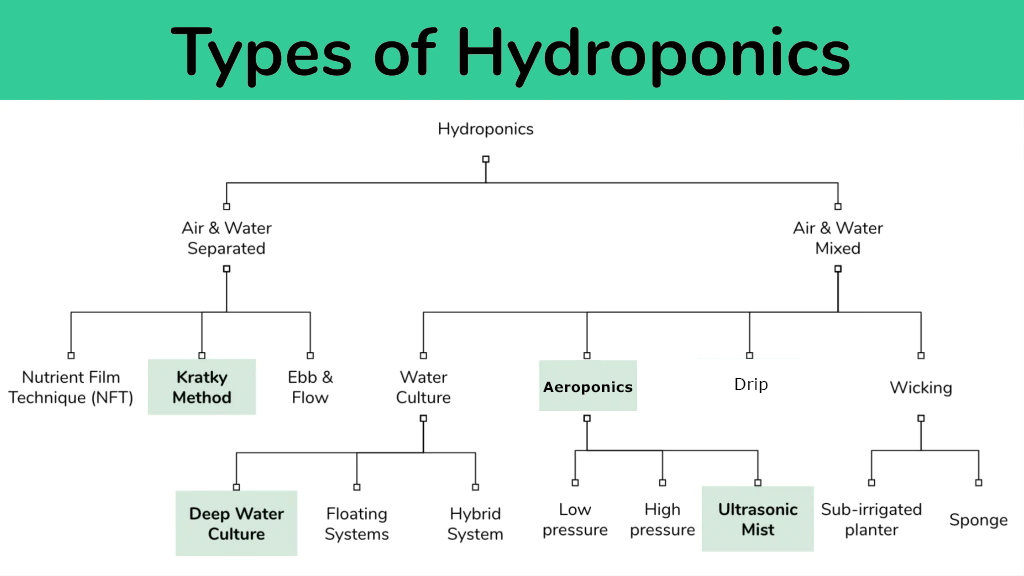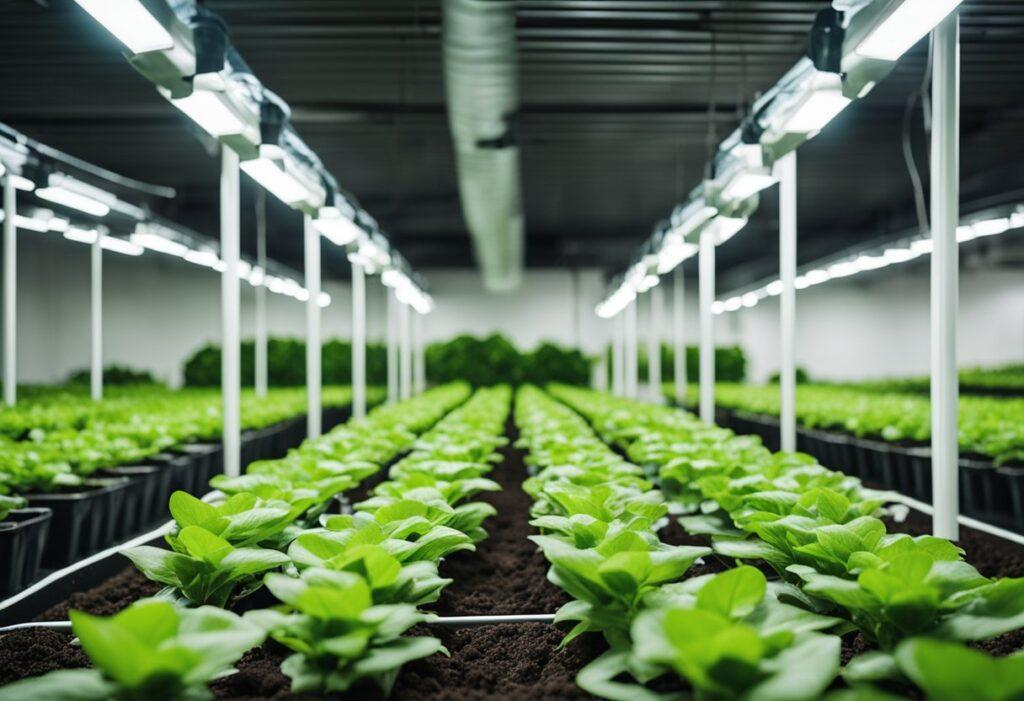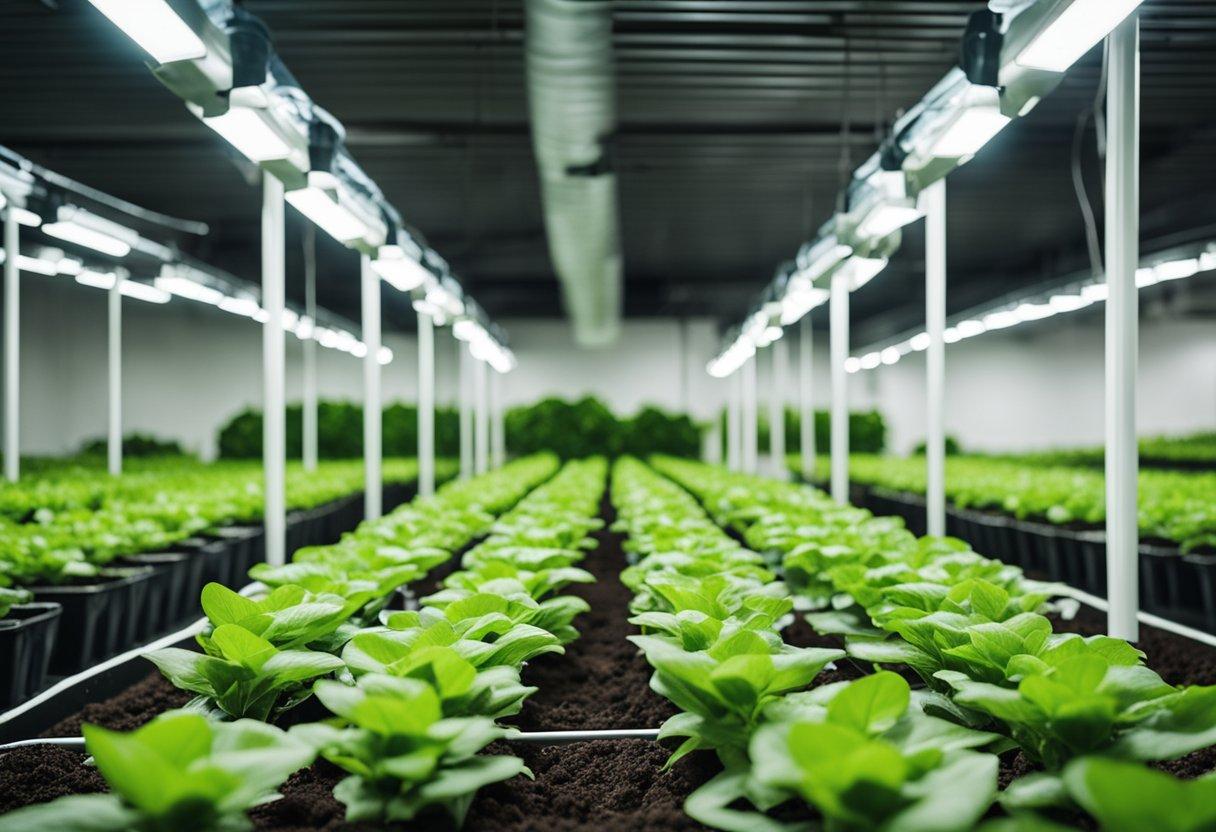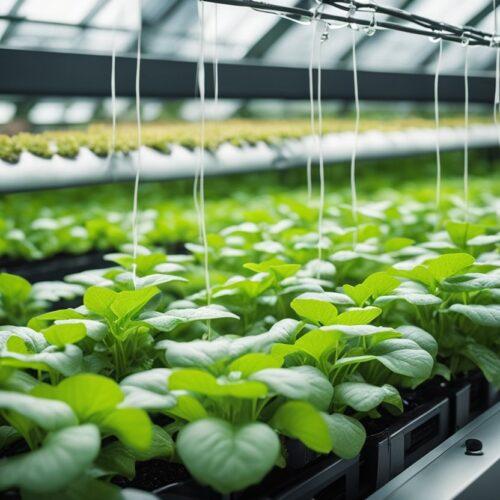Aeroponics and Kratky are two popular methods of growing plants without soil. Aeroponics involves suspending plant roots in the air and misting them with nutrient-rich water, while Kratky is a passive hydroponic method that allows plants to grow in a stationary container of water without any electricity or pumps. Both methods have their advantages and disadvantages, and choosing the right one depends on several factors.

Key Takeaways
- Aeroponics and Kratky are two popular methods of growing plants without soil.
- Aeroponics is a high-tech method that requires more maintenance and investment, while Kratky is a low-tech method that is easier to set up and maintain.
- Choosing the right method depends on several factors, including cost, space, time, and plant type.
Understanding Aeroponics
Aeroponics is a method of growing plants in a soilless environment where the roots are suspended in air and misted with nutrient-rich water. This method of cultivation is gaining popularity due to its efficiency and high yield potential. In this section, we will discuss the principles of aeroponics, its advantages, and challenges.
Principles of Aeroponics
The principle of aeroponics is based on the fact that plants need oxygen, water, and nutrients to grow. In an aeroponic system, the plant roots are suspended in air and sprayed with a nutrient-rich mist. The roots absorb the nutrients and moisture from the mist, and the excess water drains away. This method provides the plant roots with a high level of oxygen, which is essential for healthy growth.
Advantages and Challenges of the Aeroponics
Understanding the Kratky Method
The Kratky method is a passive hydroponic system that requires no electricity or pumps. It is a simple and low-cost method that is ideal for beginners who want to experiment with hydroponics. In this section, we will discuss the principles of the Kratky method, its advantages, and challenges.
Principles of the Kratky Method
The Kratky method was developed by Dr. Bernard Kratky in the 1950s. It is a non-circulating hydroponic system that relies on the principle of plant physiology and the properties of water. The system consists of a container filled with a nutrient solution and a net pot that holds the plant. The net pot is suspended above the nutrient solution, and the roots grow down into the solution.
The Kratky method works on the principle of the plant’s ability to absorb oxygen from the air and carbon dioxide from the water. As the plant grows, it uses up the nutrient solution, and the water level in the container decreases. The air gap between the water level and the roots allows the plant to absorb oxygen from the air. The roots also release carbon dioxide into the air, which helps to maintain the pH of the nutrient solution.
Advantages and Challenges of the Kratky Method
For more in-depth check out this article ‘Legendary Kratky Method‘ to learn how to grow plants without soil or regular watering using the legendary Kratky Method.
Comparative Analysis

Aeroponics and Kratky are two popular methods of hydroponic gardening, but which one is better? Let’s take a closer look at some of the key differences between the two methods.
Efficiency and Productivity
Aeroponics is generally considered to be the more efficient and productive of the two methods. This is because it uses a misting system to deliver nutrients directly to the roots of the plants, which allows for faster growth and higher yields. In contrast, Kratky relies on a static nutrient solution that gradually gets used up over time, which can lead to slower growth and lower yields.
Cost and Maintenance
When it comes to cost and maintenance, Kratky has the advantage. This is because it does not require any electricity or pumps, which means it is much cheaper to set up and maintain. Additionally, Kratky Gardens requires very little monitoring, as the nutrient solution is self-contained and does not need to be replenished until it runs out.
On the other hand, Aeroponics can be more expensive to set up and maintain, as it requires a misting system and a power source to operate. Additionally, the misting system needs to be monitored regularly to ensure that it is functioning properly and delivering nutrients to the plants.
Environmental Impact
Both Aeroponics and Kratky have relatively low environmental impacts compared to traditional soil-based gardening. However, Aeroponics may have a slight edge in this area, as it uses less water and nutrients than Kratky. This is because the misting system delivers nutrients directly to the roots of the plants, which means less water and nutrients are wasted.
Overall, both Aeroponics and Kratky have their pros and cons, and the choice between the two will depend on a number of factors, including the type of plants being grown, the available resources, and the goals of the gardener.
Choosing the Right Method
When deciding between aeroponics and the Kratky method, there are several factors to consider. Below are some considerations for small and large scale farming, as well as real-world applications of each method.
Considerations for Small-Scale Farming
For small scale farming, the Kratky method may be the better choice due to its simplicity and low cost. It is also a passive system, which means it does not require constant monitoring. However, the Kratky method may not be suitable for crops that require high oxygen levels or for larger plants that need more nutrients.
On the other hand, aeroponics may be a good option for small-scale farming if the grower is willing to invest in the necessary equipment. Aeroponic systems require electricity and pumps, which can increase the cost of setup and maintenance. However, aeroponics offers several advantages over the Kratky method, such as faster growth rates, higher yields, and the ability to grow a wider range of crops.
Considerations for Large-Scale Farming
For larger scale farming, aeroponics may be the better choice due to its higher yields and faster growth rates. However, aeroponic systems can be more expensive to set up and maintain than the Kratky method. Additionally, aeroponic systems require more monitoring and maintenance than passive systems like the Kratky method.
The Kratky method may be suitable for larger-scale farming if the grower is willing to accept lower yields and slower growth rates. This method is low-cost and low-maintenance, making it a good option for growers who want to minimize their expenses and labor.
Real-World Applications of Aeroponics and the Kratky Method
Aeroponics and the Kratky method have been used in a variety of real-world applications. For example, aeroponic systems have been used to grow lettuce in urban environments, where space is limited and soil quality is poor. The Kratky method has been used to grow herbs and vegetables in small backyard gardens and on rooftops.
Both methods have also been used in commercial agriculture. For example, aeroponic systems have been used to grow strawberries and other high-value crops in greenhouses. The Kratky method has been used to grow leafy greens and other crops in hydroponic farms.
Combining Aeroponics and the Kratky Method for Optimal Plant Growth
Aeroponics and the Kratky method can be combined to create a hybrid system that maximizes the benefits of each.
By combining the two systems, growers can create a system that provides the benefits of both. The Kratky method can be used as a backup system for the aeroponic system, ensuring that plants have a source of nutrients and water even if the misters fail. Additionally, the Kratky method can be used to start seedlings before transferring them to the aeroponic system, allowing them to establish a strong root system before being exposed to the high-tech environment.
Another way to combine the two systems is to use the Kratky method for the vegetative stage of plant growth and then transfer the plants to the aeroponic system for the flowering stage. This allows growers to take advantage of the low-cost and low-maintenance benefits of the Kratky method during the early stages of growth, while still providing the high-tech environment that plants need to produce large yields during the flowering stage.
Discover the pros and cons of Aeroponics vs. Fogponics in this article.
Conclusion
In conclusion, both aeroponics and Kratky methods have their pros and cons. Aeroponics is a more advanced and efficient method that requires more technical knowledge and equipment. It allows for faster growth and higher yields, making it more suitable for commercial use. However, it is also more expensive and requires more maintenance.
On the other hand, the Kratky method is a simpler and more affordable option that is suitable for home gardeners and beginners. It requires less equipment and maintenance (no moving parts or electricity, making it a more accessible option for those who want to try hydroponics for the first time. It also allows for more flexibility in terms of plant choice and location.




